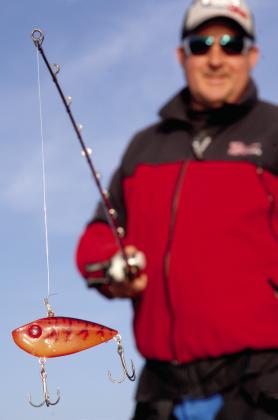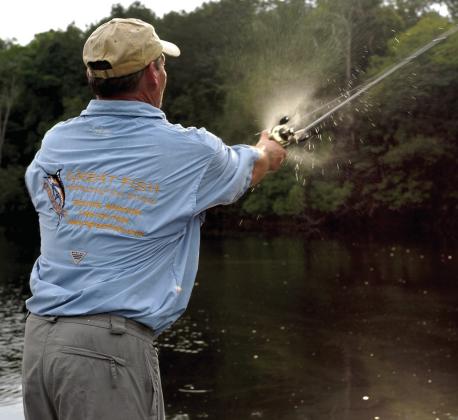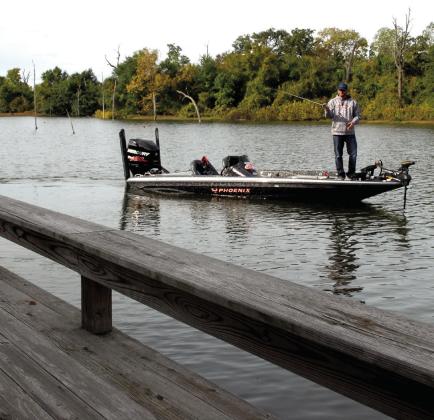Some tips to help anglers put their baits where they want them
The young Brazilian fishing guide named “Zeka” eased the aluminum skiff through a narrow canal deep in the heart of the Amazon Rainforest. He alerted Gary Fisher and I to be on point as we neared a still water lagoon just around the next bend.
“Grande tucanaré,” the guide said, his hands held apart about the width of a yard stick. “Wait.”
Fisher and I looked at one another and grinned. Tucanaré means peacock bass in Portuguese. Zeka knows where the big ones live.
Fisher had yet to connect on his first peacock of the day. I did the polite thing and offered him the front deck as we approached the pocket.
The nose of the boat had barely entered the clearing when the guide noticed a promising sign.
“Bambinos -- cast!” he shrieked, pointing to a small cloud of peacock bass fry dimpling the surface 40 yards ahead.
Fisher hesitated briefly to assess the situation and gather his wits. Peacock bass are fierce predators with a hair trigger. The fish are quick to go into defense mode when something gets too close their little ones.
The opportunity was golden, but the cast had to be right on the money to seize it. Too far left or right and the bait would land in the brush.
Fisher reared back and let the Luhr Jensen Woodchopper rip. The magnum topwater lure plowed through the air like a line drive off a baseball bat. The landing wasn’t exceptionally pretty. But it was right on target, and that’s what counted.
Two hard yanks on the bait and the fish wrecked it. The strike was so violent it sounded like someone dropped car battery in the water. The peacock — a colorful threebarred male — weighed a healthy 17 pounds.
The Amazon is a dream destination for many, but anglers needn’t travel overseas to put their bait casting abilities to the test. The lakes and bays of Texas will do just fine.
Texas waters — fresh or salt —breed versatility in a fisherman. If you can fish here, you can fish anywhere in the world.
To wit: Saltwater bait casters and fly fishers routinely toss lures to pot holes, guts, canals, sand bars and other good stuff known to hold red drum, speckled trout and flounder. The lucky ones are sometimes rewarded the thrill of casting to fish they can actually see.
Freshwater anglers are gifted with way more targets to chunk at. The bass fishing crowd is the most target oriented of all. They have to be.
Bass are object nuts inherently attracted to stumps, trees, stick-ups, boat docks, bulk heads, laydown logs, bushes, brush piles, rocks and grass beds.
The take home message: To catch fish consistently, you must be able to routinely put lures where the fish are at without spooking them. That could be beneath a shady boat dock, smack in the middle of willow bush or tight to fork of an underwater lay down.
Special Delivery There are a number of ways to deliver a fishing lure. The big three are casting, flipping and pitching. The over hand cast is the most elementary. It is often used in open water situations where distance is more important than accuracy. Just rear back and let ‘er rip.
The sidearm roll cast is conducive to more subtle, accurate presentations at short distances. Bring the rod to the side and use your wrists swing the lure back slightly over and under the rod tip as you release and feather the spool.
Flipping and pitching are more specialized. They work best for placing baits tight to individual objects such as stumps, bushes and boat docks at close range. The presentation should be so subtle that the bait barely makes a ripple when it enters the water. This means the lure must maintain low trajectory in flight.
Flipping is ideal for probing short range targets and heavy grass, often with jig or Texas rig. Pitching is long range flipping. The rod is used as a pendulum for propelling baits to targets 10-30 feet away. Both tactics call for big line and as a fairly long rod with some serious backbone, medium/heavy or heavy action.
Here a few tips to help anglers improve bait casting skills: Choosing a Reel: There are all plenty of selling features on modern bait casting reels. Just know that bells and whistles are useless if a reel isn’t well mannered for casting.
Buy the best reel you can afford. Look for quality gears, easy-to-adjust braking, a stout drag, non-slip grips, slightly over-sized handle and high quality bearings.
It’s also good idea to choose a reel that is lightweight and comfortable in your hands. Low profile reels rule for most inland applications. There are left and right-handed models.
Right Gear Ratio: Something else to consider is reel ratio. Think of the gear ratio on a fishing reel like the gear ratio on a vehicle. Some reels are built for speed. Others are made for low end torque.
Reel gear ratios are identified by three numbers, like 7.3:1 The first two numbers represent the number of times the spool rotates with one turn of the reel handle. The last one represents a single revolution of the reel handle.
The higher the first two numbers, the faster the reel gathers line. A 6.4:1 ratio is ideal for a beginning angler. It covers just about all the bases from dragging Carolina rig to casting a crank bait. In some cases you may need to turn the handle a little faster or slower in order to achieve the desired result. Try to test out different models before you buy.
Rod Choices: Like reels, rods are never created equal. Rods come in different lengths, actions (light, medium and heavy) and are made using a variety of materials. Rods made from graphite composite are popular because they are lightweight, strong and sensitive.
Finding the proper balance between rod action/length, line size and lure size helps breed accuracy and casting distance. A good rule of thumb to follow is the lighter the bait, the less radical you should go in terms of line size, rod action and rod length.
Practice Time: Learning to cast proficiently takes time. It’s all about repetition and developing good habits.
The best way to learn is to go fishing every chance you get, but you needn’t be on the water to polish those casting skills. You can do it in a driveway or backyard. It’s best to practice standing in a chair or on the deck of a boat.
The idea is to simulate a real time situation so you’ll be best prepared to put the bait exactly where it needs to be when game time rolls around. ----- Matt Williams is a freelance writer based in Nacogdoches. He can be reached by email, mattwillwrite4u@yahoo.com.






